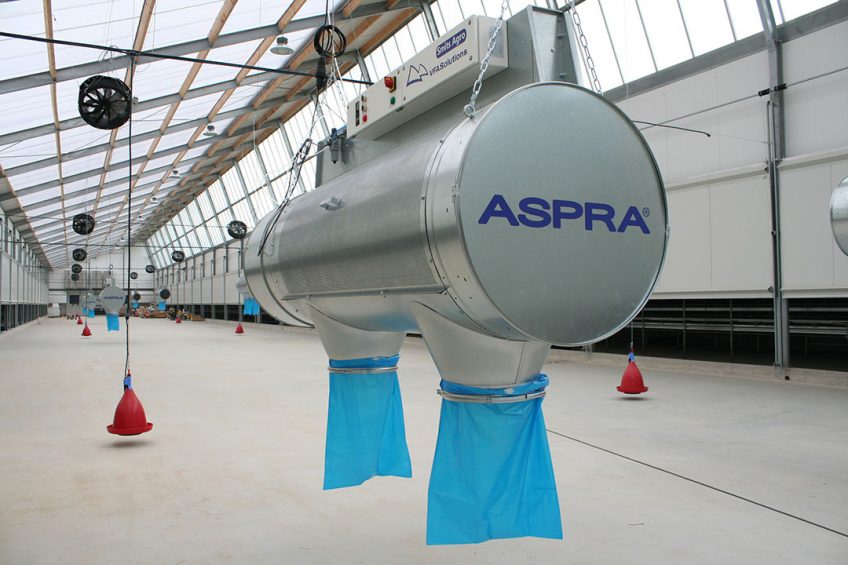Addressing sustainability challenges in Dutch egg sector

Steps towards sustainable egg production require multi-stakeholder dialogue to find consensus in a world where global demand for eggs is increasing.
With concerns being raised about the environmental, economic and social impact of egg production, researchers from Wageningen University, Netherlands, interviewed 24 stakeholders to look at the potential trade-offs in addressing these challenges. The Netherlands is the largest exporter of eggs within Europe, accounting for 40% of value of exported eggs (Eurostat 2017).
The paper, published last week in the Journal of Cleaner Production, provides an overview of innovations suggested by stakeholders that can help address identified sustainable challenges. It also looks at current limitations for the implementations of these innovations. Innovations identified by stakeholders related to animal health and welfare (13), housing systems (7), economy (8), environment (9) and organisation (6). Stakeholders considered innovations to reduce particulate matter emissions as a key priority, perhaps due to the country’s dense population and concerns about greenhouse gases. In addition, controlling poultry red mite, approaches to translate costs for environmental investments to consumers, closing manure-feed cycles and improved collaboration in the chain were considered as important steps to address. Among some of the innovations identified through the interviews were:
Animal Health and Welfare:
- Roosters: in-ovo selection
- Roosters: market roosters
- Multipurpose breeds for meat and egg production
- Avian Influenza vaccine
- Better management to control red mite, such as Q perch, use of herbs, better light in the barn and weekly cleaning)
- Transport reduction through farm integration
- Breeding and genetics (improvement in longevity, egg quality, feed efficiency, digestion of by-products, reduce aggression)
- Gene editing (e.g. for avian influenza)
- Sensors for detection of disease and monitoring of behaviour
- Feeding of insects to improve health and welfare
- Germinated grains as feed
- Systematic veterinary support
- Greater robustness (focus on disease resistance and less on production)
Housing systems
- Emission reducing techniques (manure drying tunnels, litter removal systems, heat exchanger, air ionisation, filters)
- Covered outdoor areas or inner garden as a possible solution for avian influenza risks
- Litter and dust bathing solutions (solutions to reduce dust bathing in own manure)
- Energy production (integration of renewable energy in housing such as solar panels, geothermal energy)
- Mobile housing systems/chicken sheds
Economy
- Create farm or egg concepts with added value (examples cited included Kipster, Rondeel, OerEi (fed on insects), Gezondheidsei (Healthy eggs) as well as selling roosters and soup chickens and the use of certification schemes)
- Local and direct sales as a revenue model and as direct link to the consumer
- Change European trade agreements to recognise a housing system with covered outdoor run
- Demand orientated production – focusing on demand rather than supply
- Translate the costs of environmental investments to the consumer (eg emission reducing techniques) using an investment fund or concept with added value
- Carbon credits (include the CO2 footprint in the price of products)
- Shorten the depreciation period of a farm to encourage innovation and renewal
- Quality control of the eggs on farm (sorting and selecting eggs on farm to gain insight in quality and improve transparency in the chain)
Environment
- Changes to consumption habits so there is revenue for all chicken parts
- Consumption reduction
- Meat and protein alternatives, such as in-vitro meats
- Lowering stocking density to reduce particulate matter emissions
- Drying poultry manure and selling pellets
- Manure incineration for energy production
- Closed cycles
- Feeding insects (produced on manure or leftovers)
Organisation
- Better consumer information including use of QR codes
- Collaboration in the chain to improve the revenue model
- Chain integration to improve optimisation and information exchange
- Block chain technology (passports across the chain)
Researchers said the prioritised innovations resonated with recent developments in the Dutch egg sector, including the fipronil saga and outbreak of high pathogenic AI, but also the fairly recent opening of the Kipster farm and concerns about climate change. The research was part of the AnimalFuture project which has been funded by organisations in France, Austria, Germany, the Netherlands, Portugal, Spain and the UK under the Horizon 2020 initiative.













